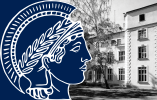Norton, John: Einstein's Miraculous Argument of 1905
Of all the papers of his 1905 year of miracles, in May 1905 Einstein reserved the term "very revolutionary" for just one, his paper that proposes the light quantum. That appraisal seems fair and even modest if we recall that the great achievement of 19th century physics had been Maxwell's electrodynamics and its successful assimilation and verification of the wave theory of light. How could Einstein have the courage to overturn the best that the previous century of physics could offer? We arrive at a different perspective if we locate Einstein's proposal of the light quantum in the work he had been pursuing in statistical physics since his first publication of 1901. There Einstein had shown how one could read the microscopic structure of matter from its measurable, macroscopic properties. His earliest paper tries to infer microscopic intermolecular forces from the macroscopic phenomena of capillarity; and his dissertation sought the size of sugar molecules in the macroscopic properties of sugar solutions. The centerpiece of the light quantum paper is what I call his "miraculous argument": the inference to a spatial localization of the energy of high frequency radiation from the volume dependence of the entropy of the radiation. Once again Einstein read the microscopic structure of matter from it macroscopic properties.






 Norton (Presentation)
Norton (Presentation)